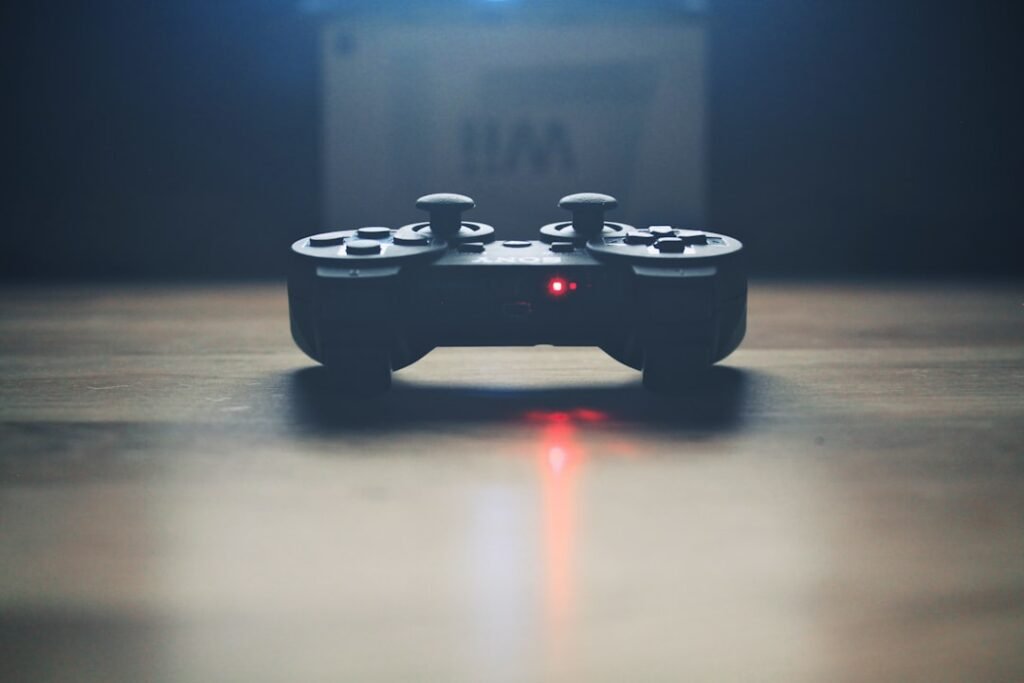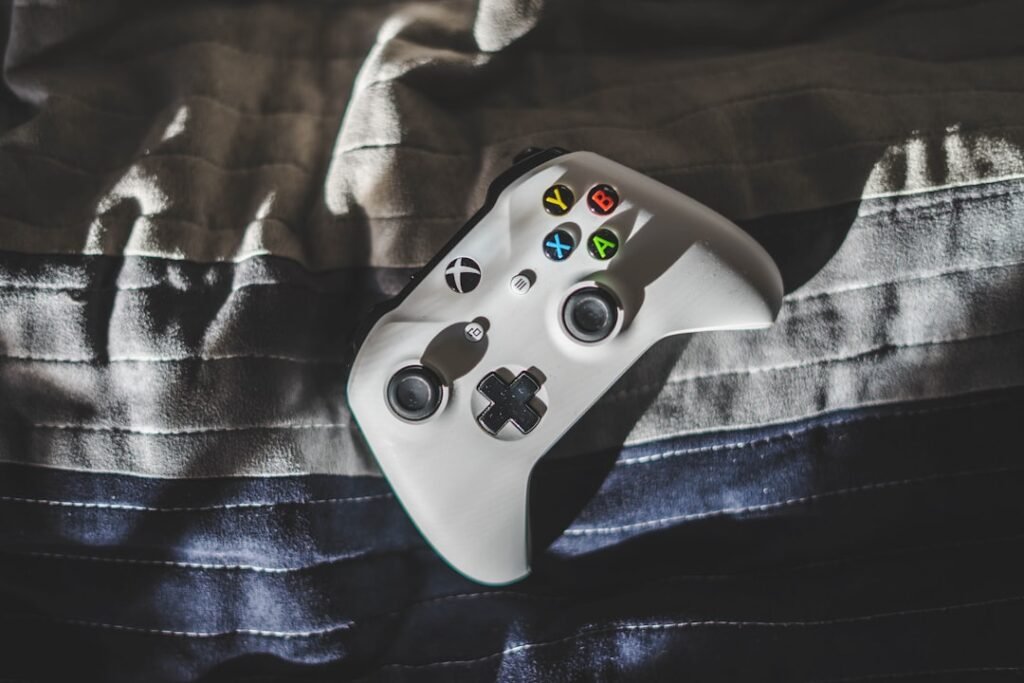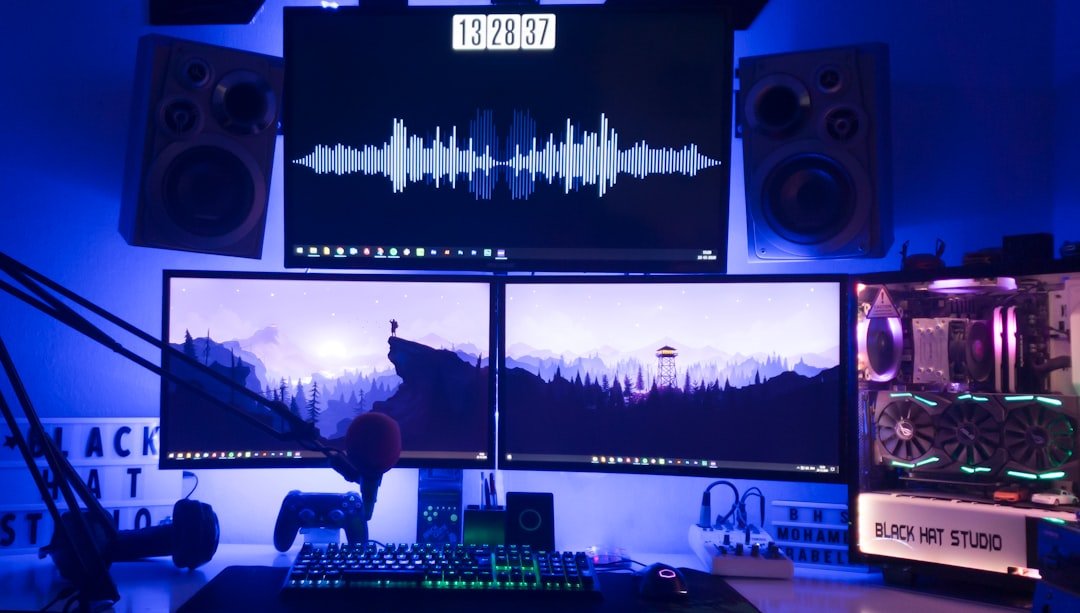Now Reading: Top Monitors for Competitive Gaming: The Best Choices for Victory
-
01
Top Monitors for Competitive Gaming: The Best Choices for Victory
Top Monitors for Competitive Gaming: The Best Choices for Victory

As a competitive gamer, I have come to realize that the monitor I use can significantly influence my performance. A high-quality monitor is not just a luxury; it is an essential tool that can make the difference between victory and defeat. In the fast-paced world of competitive gaming, where every millisecond counts, having a monitor that delivers sharp visuals and rapid response times is crucial.
The clarity of the images on the screen can enhance my ability to spot opponents, track movements, and react swiftly to in-game events. A monitor that provides vibrant colors and high contrast can also immerse me deeper into the gaming experience, allowing me to appreciate the artistry of the game while maintaining focus on my objectives. Moreover, the importance of a high-quality monitor extends beyond mere aesthetics.
It directly impacts my gameplay mechanics. When I engage in competitive matches, I need to be able to see every detail clearly, from the smallest character movements to the intricate environments. A monitor with poor resolution or slow refresh rates can lead to blurring and ghosting effects, which can hinder my ability to react quickly.
In competitive gaming, where split-second decisions are often the difference between winning and losing, having a reliable monitor is paramount. It is not just about playing; it is about playing at my best.
Key Features to Look for in a Gaming Monitor
When searching for the perfect gaming monitor, I have learned that there are several key features I should prioritize. First and foremost, resolution plays a vital role in my gaming experience. A higher resolution, such as 1440p or 4K, allows for sharper images and more detailed graphics.
This clarity can be particularly beneficial in competitive settings where spotting enemies from a distance is essential. Additionally, I consider the size of the monitor; larger screens can provide a more immersive experience, but I must also ensure that it fits comfortably within my gaming setup. Another critical feature I look for is the refresh rate.
A higher refresh rate, such as 144Hz or even 240Hz, means that the monitor can display more frames per second, resulting in smoother gameplay. This is especially important in fast-paced games where every frame counts. Coupled with refresh rate is response time, which measures how quickly a pixel can change from one color to another.
A lower response time reduces motion blur and ghosting effects, allowing me to see fast-moving objects clearly. These features combined create an environment where I can perform at my peak.
Top Picks for Budget-Friendly Gaming Monitors

Finding a budget-friendly gaming monitor that doesn’t compromise on quality can be a challenge, but I have discovered several options that strike a balance between performance and affordability. One of my top picks is the AOC 24G2, which offers a 24-inch Full HD display with a 144Hz refresh rate and a 1ms response time. This monitor provides excellent color accuracy and viewing angles thanks to its IPS panel, making it perfect for both competitive gaming and casual play.
The price point is incredibly reasonable for the features it offers, making it an ideal choice for gamers on a budget. Another great option is the ASUS VG248QG. This monitor features a 24-inch Full HD display with a blistering 165Hz refresh rate and a 0.5ms response time.
The combination of these specifications ensures that I experience smooth gameplay without any noticeable lag or ghosting. Additionally, it comes with G-Sync compatibility, which helps eliminate screen tearing during intense gaming sessions. For those who want to invest wisely without breaking the bank, both of these monitors provide exceptional value while still delivering the performance needed for competitive gaming.
The Best High-End Gaming Monitors for Serious Competitors
For serious competitors like myself who are willing to invest in top-tier technology, high-end gaming monitors offer unparalleled performance and features that can elevate my gaming experience to new heights. One standout option is the Dell Alienware AW2521H, which boasts a stunning 360Hz refresh rate and a 1ms response time. This monitor utilizes NVIDIA G-Sync technology to ensure smooth gameplay without tearing or stuttering, making it an excellent choice for fast-paced titles where every frame matters.
The vibrant colors and deep blacks provided by its IPS panel enhance my immersion in the game world. Another exceptional choice is the ASUS ROG Swift PG32UQX, which caters to gamers who demand both speed and stunning visuals. With a 32-inch 4K display and a refresh rate of up to 144Hz, this monitor delivers breathtaking graphics while maintaining fluid gameplay.
The HDR support enhances contrast and color accuracy, allowing me to see details in both bright and dark areas of the game. Additionally, its robust build quality and customizable RGB lighting add an aesthetic appeal that complements my gaming setup perfectly. Investing in such high-end monitors not only improves my performance but also enriches my overall gaming experience.
How Refresh Rate and Response Time Impact Gaming Performance
Understanding how refresh rate and response time impact gaming performance has been crucial in my journey as a competitive gamer. The refresh rate refers to how many times per second the monitor updates the image on-screen, measured in Hertz (Hz). A higher refresh rate means smoother motion and less blurring during fast-paced action sequences.
For instance, when I play first-person shooters or racing games, having a monitor with at least 144Hz refresh rate allows me to track moving targets more effectively and react faster than my opponents. Response time is equally important; it measures how quickly a pixel can change from one color to another, typically measured in milliseconds (ms). A lower response time reduces motion blur and ghosting effects, which can be detrimental during intense gameplay moments.
If I am playing a game where precision is key, such as competitive shooters or fighting games, having a monitor with a response time of 1ms or lower ensures that I see exactly what is happening on-screen without any delay or distortion. Together, these two factors create an environment where I can perform at my best and maintain a competitive edge over my opponents.
Tips for Setting Up and Optimizing Your Gaming Monitor for Competitive Play

Setting up and optimizing my gaming monitor is just as important as choosing the right one. One of the first steps I take is adjusting the monitor’s height and angle to ensure that it aligns perfectly with my eye level. This ergonomic setup helps reduce strain during long gaming sessions and allows me to maintain focus on the screen without discomfort.
Additionally, I make sure that there are no reflections or glare from windows or lights that could distract me during gameplay. Calibrating the display settings is another crucial step in optimizing my gaming experience. I often adjust brightness, contrast, and color settings to achieve the best visual clarity possible.
Many monitors come with preset modes tailored for different types of games; experimenting with these modes can help me find the one that suits my preferences best. Furthermore, enabling features like FreeSync or G-Sync can help eliminate screen tearing and stuttering during gameplay, ensuring that I have a smooth experience regardless of how demanding the game may be. In conclusion, investing in a high-quality gaming monitor is essential for anyone serious about competitive gaming.
By understanding key features like resolution, refresh rate, and response time, I can make informed decisions when selecting a monitor that meets my needs. Whether I’m looking for budget-friendly options or high-end models designed for serious competitors, there are plenty of choices available that can enhance my gaming experience significantly. With proper setup and optimization techniques, I can ensure that my monitor serves as an invaluable tool in my quest for victory in the competitive gaming arena.
If you’re looking to enhance your gaming experience beyond just the monitor, you may want to check out this article on the top SSDs for gaming in 2025. Having a high-performance SSD can significantly improve loading times and overall gameplay smoothness, making it a crucial component for competitive gaming.



























